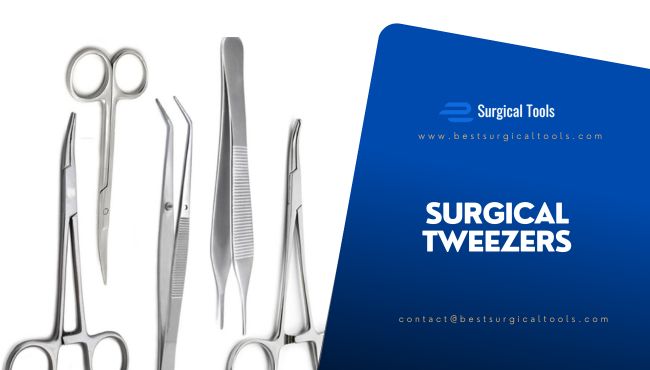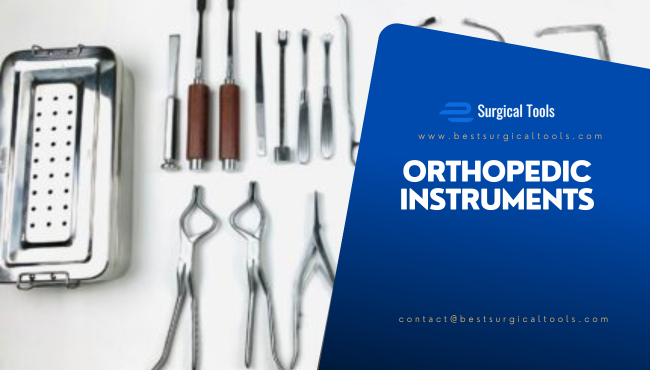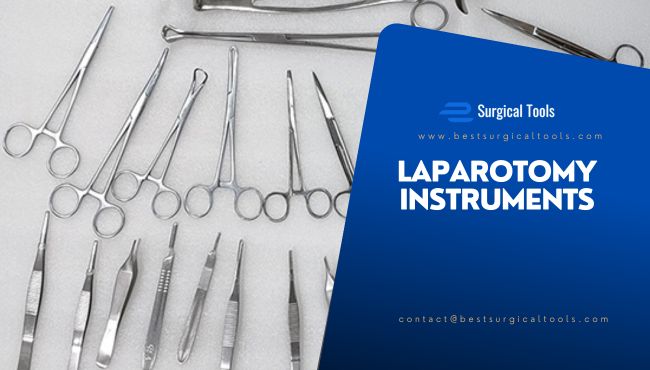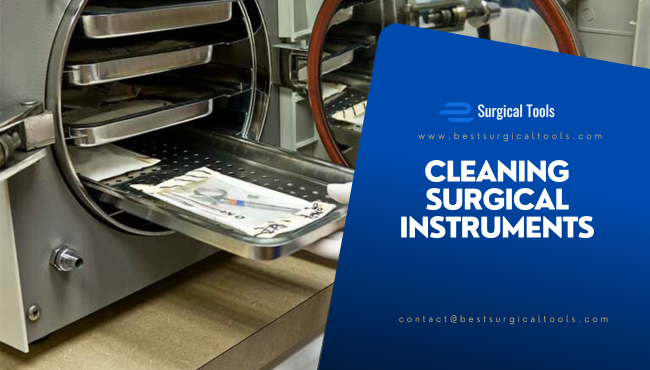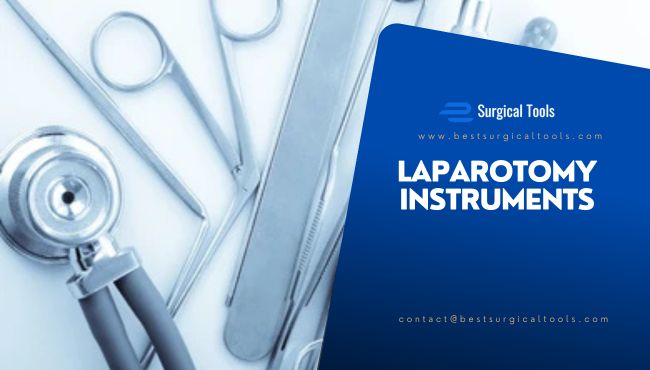
Medical Instruments: The Ultimate Guide to Surgical and Diagnostic Tools
Medical instruments are the unsung heroes of today’s healthcare world, helping doctors and surgeons figure out what’s wrong, treat it, and keep patients on track. From basic thermometers to high-tech robotic surgery gadgets, these tools have totally changed the game, making things more precise and speedier. In this guide, we’ll walk through the different kinds of medical instruments, what they do, and why they’re a must-have for healthcare pros everywhere.
1. Understanding Medical Instruments: An Overview
Medical instruments are the backbone of modern healthcare, pitching in big time for diagnosing, treating, and looking after patients. They range from simple stuff you hold in your hand—like a thermometer—to fancy robotic systems for cutting-edge surgeries. Each one’s built for a specific job, keeping things accurate, smooth, and safe. Let’s break them into four main crews to get the full picture.
1.1 Diagnostic Instruments
Diagnostic instruments are the go-to tools for doctors, radiologists, and lab techs to spot and dig into health issues. They catch problems early, so treatment can kick off ASAP. Here’s the lineup:
- Stethoscope – Listens to your heart, lungs, or gut to catch weird rhythms or breathing hiccups.
- Thermometer – Checks your temp to spot fevers or infections—digital, infrared, or even old-school mercury styles.
- Sphygmomanometer – Measures blood pressure to flag high levels or heart trouble.
- Otoscope – Peeks into ears to find infections or blockages.
- ECG Machine – Tracks heartbeats for any funky business like blockages.
- X-ray Machine – Snaps pics of bones and insides to spot breaks or tumors (check out more at RadiologyInfo).
- Ultrasound Scanner – Uses sound waves for baby checks or organ peeks.
- MRI Scanner – Gives detailed 3D shots of your brain or muscles for tricky diagnoses.
These goodies help docs nail down what’s up before planning the next move.
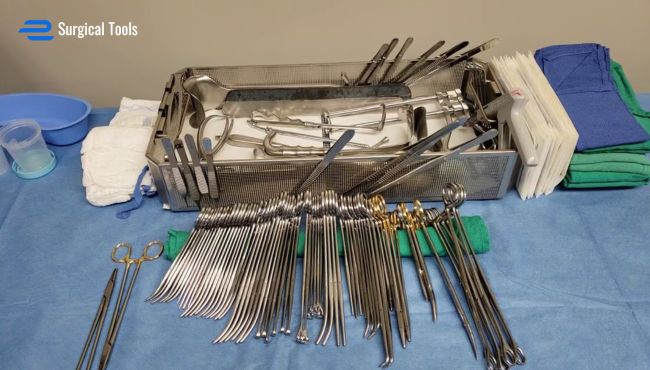
1.2 Surgical Instruments
Surgical instruments are all about precision and control, making surgeries—big, small, or robotic—a breeze. Think:
- Scalpel – Sharp little blade for clean cuts.
- Surgical Scissors – Mayo for tough stuff, Metzenbaum for delicate bits.
- Forceps – Like tweezers for grabbing tissues or sutures.
- Hemostats – Clamps to stop bleeding fast.
- Needle Holders – Hold needles steady while stitching up.
- Surgical Retractors – Pull tissues aside for a clear view—Deaver or Army-Navy styles.
- Electrocautery Devices – Zap tissues with heat to stop bleeds.
- Endoscopes – Flexible camera tubes for minimally invasive ops like laparoscopy.
They’re kept squeaky clean to dodge infections—super crucial!
1.3 Therapeutic Instruments
Therapeutic instruments step in to help patients heal or manage ongoing issues. They’re lifesavers for:
- Ventilators – Breathing help in emergencies like respiratory failure.
- Infusion Pumps – Deliver meds or fluids right into your veins.
- Defibrillators – Shock hearts back to rhythm during arrests.
- Dialysis Machines – Clean blood for kidney patients (learn more at DaVita).
- Pacemakers – Keep heartbeats on track.
- Nebulizers – Turn meds into mist for lung relief.
- TENS Machines – Zap nerves to ease pain.
These keep ICUs and rehab ticking along smoothly.
1.4 Laboratory Instruments
Laboratory instruments dig into blood, tissues, and tiny bugs to crack diagnoses and fuel research. You’ll see:
- Microscopes – Zoom in on cells or bacteria.
- Centrifuges – Spin samples to split out blood parts.
- Hematology Analyzers – Scan blood for anemia or infections.
- Biochemistry Analyzers – Check glucose or kidney stats.
- PCR Machines – Test genes or spot viruses like COVID-19.
- Autoclaves – Steam-sterilize tools to keep them safe.
- Blood Gas Analyzers – Measure oxygen and pH in critical care.
They speed up answers and boost accuracy big time.
2. Essential Surgical Instruments and Their Uses
Surgical instruments are built for precision, keeping procedures safe and slick. Here’s the rundown:
2.1 Cutting and Dissecting Instruments
These sharp medical instruments slice and dice with care:
- Scalpels – Razor-edged for incisions, with #10 for big cuts, #11 for stabs, #15 for delicate work.
- Surgical Scissors – Metzenbaum for finesse, Mayo for tough tissues, Iris for eyes, and suture ones for threads.
- Bone Saws – Gigli for flexibility, Oscillating for joints, Sternal for heart ops—tough stuff!
2.2 Grasping and Holding Instruments
Medical instruments for grabbing keep things steady:
- Forceps – Tissue (Adson) for grip, Dressing for gauze, Allis for soft hold, toothed or not.
- Clamps – Hemostats (Mosquito or Kelly) stop bleeds, Kocher grips bones, Babcock hugs delicate bits.
2.3 Retracting and Exposing Instruments
These medical instruments open things up:
- Surgical Retractors – Deaver for deep dives, Army-Navy for small cuts, Richardson for muscles, Gelpi for spines.
- Speculums – Vaginal, nasal, or ear types for peeking inside.
2.4 Suturing and Stapling Instruments
Medical instruments for closing wounds:
- Needle Holders – Mayo-Hegar for all-rounders, Crile-Wood for precision, Olsen-Hegar for quick cuts.
- Surgical Staplers – Linear for long seams, Circular for gut joins, Skin for fast fixes.
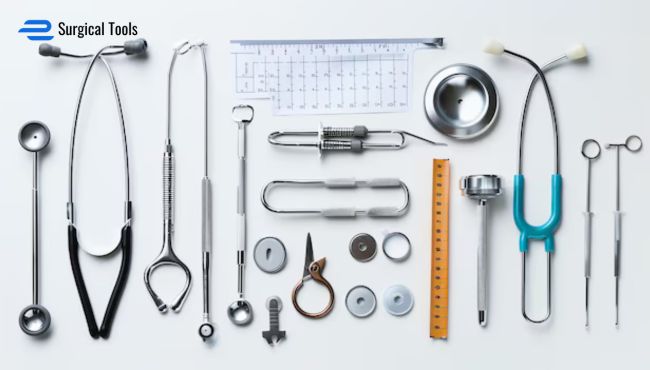
3. Diagnostic Instruments: The Foundation of Disease Detection
Catching health issues early is everything when it comes to treatment, and doctors count on some pretty cool diagnostic to get it spot on.
3.1 Basic Diagnostic Tools Used in Clinics
Medical instruments are the everyday MVPs in clinics, helping healthcare folks figure out what’s up, spot diseases, and keep an eye on your wellness. Here’s the lineup of the usual suspects:
- Stethoscope – Docs use this classic to tune into your heart’s beat, lungs’ whoosh, or even pair it with a blood pressure check—modern ones come with digital amps or Bluetooth perks.
- Thermometer – A quick way to see if you’re running hot—digital gives fast reads, infrared skips the touch, and mercury’s the old-timer still hanging around.
- Sphygmomanometer – Wraps your arm to measure blood pressure—manual’s a team effort with a stethoscope, while digital does it solo for home or clinic ease.
These basics catch stuff like fevers or heart risks early, keeping things simple but sharp.
3.2 Advanced Imaging and Diagnostic Devices
When it’s time to peek inside, advanced medical instruments step up with imaging tricks to check out bones, organs, and more.
- X-Ray Machines – Snapshots of your insides without a cut—great for spotting broken bones, lung gunk, or joint wear (learn more at RadiologyInfo). Digital ones cut radiation and speed things up.
- Ultrasound Scanners – Bounce sound waves to peek at babies in the womb, organs like your liver, or soft tissue boo-boos—3D and 4D versions give a real-time wow factor.
- MRI Machines – Magnets and radio waves whip up detailed pics of your brain, joints, or tumors—no radiation here, just pure imaging magic for the tough stuff.
These tools give docs the full scoop without breaking a sweat.
3.3 Laboratory Diagnostic Instruments
In the lab, medical instruments dig into blood, tissues, and tiny bugs to crack the case at a micro level.
- Microscopes – Zoom in on blood, germs, or biopsies to spot infections, anemia, or cancer—fancy electron ones take it to the next level.
- Centrifuges – Spin your samples crazy fast to split out blood parts or test urine for kidney clues—automation makes it a breeze now.
- ECG Machines – Track your heart’s electric vibes to catch wonky beats, heart attacks, or pressure probs—portable ones even let you check from home.
These gadgets turn lab work into fast, spot-on answers.
4. Therapeutic and Patient Care Instruments
Beyond figuring out what’s wrong or slicing things open, therapeutic medical instruments are all about helping you heal and stick around. They’re the unsung heroes in hospitals, ICUs, and even at home, keeping patients going strong.
Infusion Pumps
These smart little boxes drip meds, fluids, or nutrients right into your veins—think chemo doses, pain relief after surgery, or ICU hydration. New ones even ping wirelessly to dodge mix-ups.
Ventilators
Lifesavers that breathe for you when lungs can’t—huge in ICUs, emergencies like COVID-19, or during surgery (check out NIH resources). Portable ones bring home some freedom now.
Dialysis Machines
Step in when kidneys quit, filtering out blood junk—hospital hemodialysis or home peritoneal styles, with wearable ones making it less of a chore.
Defibrillators
Zap your heart back to rhythm in a crisis—AEDs pop up everywhere, ICDs live inside risky hearts, and pros wield manual ones in the ER.
These medical instruments keep the recovery train rolling, no matter the setting.
5. The Evolution of Medical Instruments: From Past to Future
Medical technology has taken us on quite a ride, hasn’t it? It’s wild to think how we’ve moved from clunky, manual tools—like those rusty scalpels and forceps of the past—to today’s high-tech, precision-driven devices that seem straight out of a sci-fi movie. These medical instruments have completely transformed healthcare, making everything from surgeries to routine checkups safer, faster, and more accurate. Back in the day, doctors relied on their hands and a few basic gadgets, but now? We’ve got robots, AI, and wearables doing some of the heavy lifting. It’s not just about keeping up with the times—it’s about saving more lives and improving how we care for people every single day.
5.1 The Rise of Smart Medical Devices
Thanks to some jaw-dropping leaps in technology, medical instruments aren’t just tools anymore—they’re smart partners in healthcare. We’re talking AI-driven machines, automated systems, and even wearables you can slap on your wrist or stick on your skin. These innovations are making it easier to catch problems early, treat them effectively, and keep patients comfortable, whether they’re in a hospital bed or chilling at home. Let’s break it down a bit and see how these advancements are shaking things up.
AI-Powered Diagnostic Tools
Artificial intelligence is seriously changing the game when it comes to figuring out what’s wrong with someone. It’s popping up in all sorts of places—like medical imaging, early disease detection, and even automating diagnoses so doctors can focus on the human side of care. For instance:
• AI-based radiology scanners are spotting tumors and weird abnormalities with pinpoint accuracy, often catching stuff the human eye might miss.
• Virtual health assistants—think chatbots or apps—are stepping in to give remote consultations, answering questions, or triaging symptoms when a doctor’s not around.
• Machine learning algorithms are digging through patient histories to predict how diseases might play out, helping docs plan ahead. Want to geek out more on this? Check out HealthIT.gov for some cool insights on AI in healthcare.
Robotic Surgery Instruments
Then there’s the world of robotic-assisted surgeries—talk about a game-changer! These medical instruments give surgeons superhuman precision, cut down recovery times, and lower the chances of something going wrong. Picture this:
The Da Vinci Surgical System lets surgeons perform insanely delicate procedures through tiny incisions, guided by robotic arms that don’t shake or tire out.
• Microsurgical robots are tackling stuff like neurosurgery or eye operations, where even a millimeter matters.
• 3D-printed surgical tools are being custom-designed for individual patients, fitting their anatomy like a glove. If you’re curious about robotics in the operating room, Robotic Surgery News has some fascinating updates.
Wearable Health Monitors
And don’t get me started on wearables—they’re like having a mini-doctor with you 24/7. These medical instruments track your health in real time, catching issues before they blow up and letting doctors keep tabs on patients from miles away. Some examples?
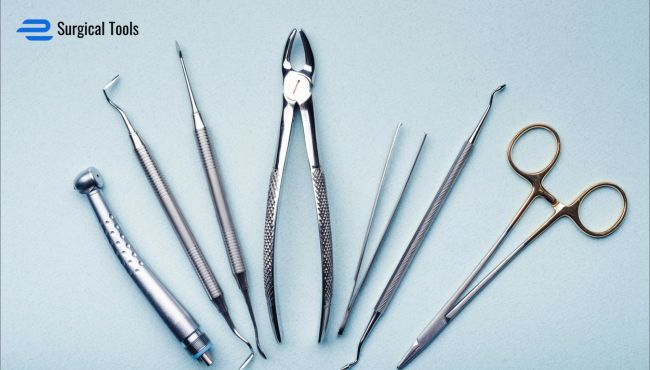
- Smartwatches with ECG monitoring can flag heart irregularities like atrial fibrillation, alerting you to call your doc ASAP.
• Continuous glucose monitors (CGMs) are a lifeline for diabetics, tracking blood sugar levels without constant finger pricks.
• Pulse oximeters measure oxygen saturation, which is clutch for anyone with lung issues, especially since the pandemic.
6. How to Choose the Right Medical Instruments for Your Clinic or Hospital
Picking the right medical instruments isn’t just a shopping trip—it’s a big decision that affects how well you diagnose, treat, and care for patients. Whether you’re setting up a shiny new clinic, upgrading your hospital’s toolkit, or expanding into new services, you’ve got to think it through. Quality gear keeps your patients safe and your practice running smoothly, so let’s talk about what to keep in mind when you’re browsing for the good stuff—like the options at .
6.1 Factors to Keep in Mind
Quality & Durability
First off, medical instruments need to be tough as nails. Surgical tools especially—they’re getting sterilized constantly, so they’ve got to hold up. Stainless steel is the gold standard here because it’s strong, resists corrosion, and lasts forever if you treat it right. Sure, high-quality stuff might cost more upfront, but it’s worth it when you don’t have to replace things every other year.
Accuracy & Calibration
When it comes to diagnostic tools—think thermometers, blood pressure cuffs, ECG machines, or imaging systems—accuracy isn’t optional. You need gear that:
• Meets international standards like FDA approval or CE certification, so you know it’s legit.
• Gets calibrated regularly to stay dead-on accurate.
• Uses cutting-edge sensors for readings you can trust every time. A wonky thermometer or an off-kilter ECG could mean misdiagnosing someone, and nobody wants that.
Ease of Use & Ergonomics
Your tools should feel good in your hands, especially if you’re using them all day. Look for:
• Ergonomic grips on surgical tools so your hands don’t cramp up during a marathon procedure.
• Digital interfaces on diagnostic gadgets that are simple to navigate, even under pressure.
• Lightweight, portable options for docs or nurses who are always on the move—like in rural clinics or home visits.
Supplier Reputation & Certification
Don’t just buy from anyone—go with suppliers you can trust. Before you hand over your cash, double-check:
• They’ve got credentials like ISO 13485, which is the badge for medical device quality.
• What other healthcare folks say—reviews or word-of-mouth from colleagues can steer you right.
• Warranty and support options, because even the best gear might need a tune-up eventually.
Cost vs. Value
Let’s be real—budget’s a factor, but going cheap can backfire big time. Low-quality medical instruments might save you a buck now but could fail when it matters most. Instead, think:
• Long-term value—spending more on durable gear saves replacement costs down the road.
• Maintenance expenses—some tools need constant fixing, which adds up.
• Tech upgrades—AI-powered or digital devices might cost more but could streamline your work for years.
7. Proper Maintenance and Sterilization of Medical Instruments
Taking care of your medical instruments isn’t just busywork—it’s critical for keeping infections at bay, ensuring patient safety, and making sure your tools last. Skip this step, and you’re risking hospital-acquired infections (HAIs) or equipment that falls apart too soon. Let’s walk through how to keep everything squeaky clean and in top shape.
7.1 Best Practices for Medical Instrument Sterilization
Autoclaving – The Most Effective Sterilization Method
Autoclaving is the king of sterilization—high-pressure steam at 121°C to 134°C that wipes out bacteria, viruses, and spores like it’s nothing. It’s your go-to for:
• Surgical tools—scalpels, forceps, clamps, you name it.
• Glassware and stainless-steel stuff that can take the heat.
• Reusable devices built to handle this kind of treatment.
Chemical Disinfection – For Heat-Sensitive Instruments
Not everything can survive autoclaving, though. For heat-sensitive medical instruments, chemical sterilization saves the day. You’ve got options like:
• 70% alcohol solutions (isopropyl or ethyl) for quick wipes on thermometers or stethoscopes.
• Formaldehyde or glutaraldehyde for trickier stuff like flexible endoscopes or plastic tools.
• Hydrogen peroxide plasma—a newer, high-tech method for delicate surgical gear that can’t take steam.
UV Sterilization – Fast & Non-Toxic Disinfection
UV-C light is the cool kid on the block, zapping germs by messing with their DNA. It’s awesome for:
• Diagnostic devices or even whole hospital rooms.
• Non-porous tools like dental instruments or electronics.
• Extra backup alongside autoclaving or chemicals for that double-clean vibe.
Instrument Maintenance for Longevity
Sterilization’s only half the battle—maintenance keeps your medical instruments going strong. Here’s the playbook:
• Regular checkups—look for rust, wear, or damage before every use.
• Smart storage—keep sterilized gear in dry, airtight spots to avoid contamination.
• Lubrication—hit hinged tools like scissors or forceps with medical-grade oils so they don’t seize up.
• Pro servicing—complex machines like ventilators, defibrillators, or ECGs need regular expert TLC per the manufacturer’s guidelines.
Conclusion
Medical instruments are the unsung heroes of healthcare—whether it’s a simple thermometer or a million-dollar MRI machine, they’re all about saving lives and making people better. As technology keeps charging forward, the future’s looking bright, with more precision, efficiency, and downright amazing patient care on the horizon. If you’re in the market for some, always go for high-quality, durable, certified gear—it’s the smart move for top performance and keeping your patients safe and sound.
Frequently Asked Questions (FAQs)
What Are Smart Medical Devices, and How Do They Work?
Smart medical instruments are high-tech tools—like AI-powered scanners, robotic surgery systems, or wearable monitors—that use advanced technology to help doctors diagnose, treat, and track patient health. They work by crunching data (think AI analyzing X-rays) or offering real-time feedback (like a smartwatch checking your heart rate), making healthcare smarter and more proactive.
How Has Technology Changed Medical Instruments Over Time?
Oh, it’s been a wild ride! Medical instruments started as basic tools—like scalpels and stethoscopes—and now we’ve got robots doing surgery and AI spotting diseases. Technology’s brought precision, speed, and even remote monitoring into the mix, turning healthcare into something way more advanced than it was a century ago.
What’s the Big Deal About AI in Medical Instruments?
AI in medical instruments is huge because it’s like giving doctors a super-smart assistant. It can spot tumors in scans faster than the human eye, predict how a disease might progress, or even chat with patients through apps. It’s all about catching problems early and making treatment more accurate.
Are Robotic Surgery Instruments Really Better Than Traditional Ones?
Yep, in a lot of ways! Robotic medical instruments, like the Da Vinci system, let surgeons work with insane precision through tiny incisions. That means less scarring, quicker recovery, and fewer slip-ups compared to traditional methods—though they still need a skilled human at the controls.
How Do Wearable Medical Instruments Help Patients?
Wearable medical instruments—think smartwatches or glucose monitors—are like personal health buddies. They track stuff like your heart rate, blood sugar, or oxygen levels in real time, alerting you or your doctor if something’s off. It’s a game-changer for managing chronic conditions or catching issues early.
What Should I Look for When Buying Medical Instruments for My Clinic?
When shopping for medical instruments, focus on quality (think durable stainless steel), accuracy (calibrated and certified), and ease of use (ergonomic designs). Check the supplier’s rep, like ISO 13485 certification, and weigh cost against long-term value—cheap gear might cost you more in repairs later.
Why Is Sterilization So Important for Medical Instruments?
Sterilization keeps medical instruments safe by killing off nasty germs that could cause infections—like those pesky hospital-acquired bugs. Without it, you’re risking patient health and wearing out your tools faster. It’s non-negotiable for anything reusable, from scalpels to endoscopes.
What’s the Best Way to Sterilize Medical Instruments?
Autoclaving’s the champ—using steamy heat to zap bacteria and viruses on tough medical instruments like surgical tools. For delicate stuff, chemical disinfection (like alcohol or glutaraldehyde) or UV light works great. It depends on what your gear can handle without breaking.
How Can I Make My Medical Instruments Last Longer?
Treat your medical instruments right! Check them for rust or damage, store them in dry, sealed spots, and lubricate hinged tools like forceps. For fancy machines like ECGs, stick to the maker’s servicing plan. A little TLC goes a long way in keeping them reliable.
Should I Go Cheap or Splurge on Medical Instruments?
Tough call, but here’s the deal: super cheap medical instruments might save cash now, but they can flake out when you need them most, risking patient safety. Splurging on quality gear—like from trusted suppliers—pays off with durability and better performance over time. Think long-term value, not just the price tag.

